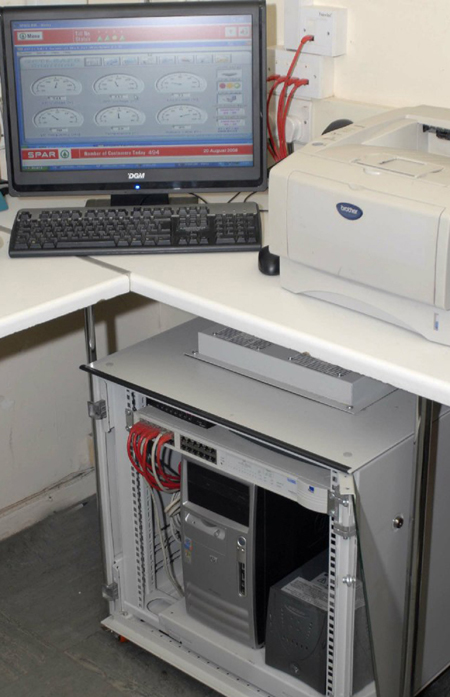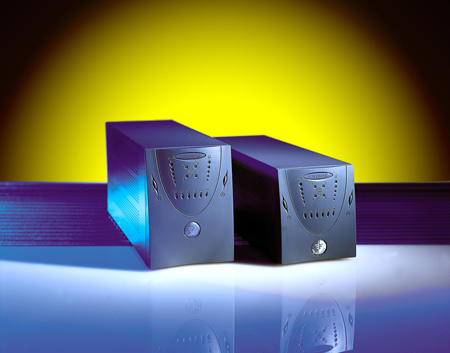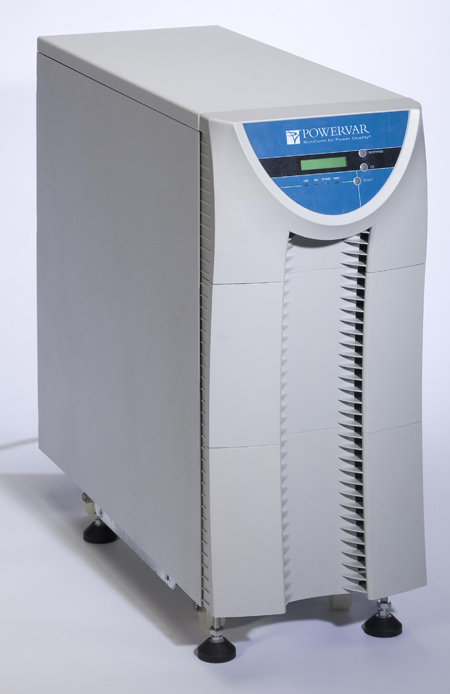Companies often install uninterruptible power supplies (UPS) to provide backup power if the main supply is lost. But power outage is relatively rare. Are we missing a trick by not looking at other issues around power quality and the potential impact on businesses?
The reason for having a UPS is to provide a secondary source of power if the primary source is lost. Yet power outage is infrequent and focusing on this diverts attention from other important basic issues.
A key decision for a company is the choice between on-line or standby UPS. The selection is not a matter of how much protection is offered by a particular design, but rather, what type of technology the UPS is protecting. Many use a combination of both linear and switch mode power supplies. Linear supplies remain popular because they contribute less noise to the electrical environment. Switch mode is common because of lower cost, efficiency, size and low heat contribution.

Most linear power supplies do not have the internal storage characteristics to allow them to ride through the 4-6msec time period required for a standby UPS to switch from AC line to battery-powered inverter. Linear supplies are also voltage-sensitive, making well-regulated voltage a necessity. Switch mode supplies, however, enjoy substantial ride-through ability. They are relatively immune to even large swings in line voltage and will function satisfactorily on standby designs. The initial choice of UPS design should be made on these criteria: standby UPS for switch mode power supplies; on-line UPS for linear power supplies.
It is a popular misconception that on-line UPSs always deliver a higher level of power quality by virtue of their double conversion (AC-DC-AC) design. In fact, a well-designed standby UPS (single conversion) that incorporates power conditioning technology can provide better protection than expensive poorly designed on-line systems.
Another decision is whether to install one large UPS or multiple smaller ones. You get economies of scale using a single large UPS - e.g., a 15kVA system is often cheaper than 30 individual 500VA units. Small individual UPSs offer flexible installation, less distribution wiring, easier maintenance and knowing that a UPS in one part of the system may fail without affecting others.


Clean power
When a UPS is installed, power quality issues must be carefully considered. A system that cannot fail because of a power outage cannot fail for other reasons. Power quality is more than having a clean, noise-free electrical supply. It means controlling harmonics, power factor and power factor penalties. It depends on the requirements of the equipment being protected. Some of the issues are:
- Impulses - These short duration, high-energy events have significant destructive potential and can cause catastrophic failure of semiconductor devices. Even when not immediately destructive, impulses contain sufficient energy levels to erode or weaken semiconductor junctions leading to failure. The effects are mitigated with a surge diverter.
- Common mode voltage - This is any voltage measured with reference to safety earth. Since most computer systems use safety earth as their logic and communications reference, clean and quiet safety earths are mandatory. Computer problems associated with common mode voltage include processor lockup, lost/fragmented data, communication errors, or �no trouble found' failures. Common mode voltage may occur in systems with daisy-chained or undersized neutrals, or when branch circuits become lengthy. Using an isolation transformer to create a separately derived power source eliminates common mode voltage.
- Noise - Resulting from distribution and use of electrical power. RFI and EMI are generated by every device that uses electricity. Ironically many of the disturbances that cause computer malfunction are induced by the computer's electrical system. Noise filters built from capacitive and inductive elements are used to divert disturbances to electrical system earth.
- Voltage regulation - More critical for linear power supplies than for systems powered by switch mode supplies - there are several methods of providing well-regulated voltage. These include tap-switching or ferro-resonant voltage regulators and buck/boost autoformers. An on-line UPS provides natural voltage regulation because of its double conversion process.
- Outage - Mitigated with a UPS device that provides reserve power from batteries. Battery-powered UPS systems function as an effective bridge until either the utility is restored or another source is brought online.
- Frequency changes - Caused by variations from the fundamental operating frequency of the electrical system. Double-conversion UPS systems have an ability to function as a frequency regulator and a high-quality on-line UPS can tightly regulate output frequency over a wide range of input frequencies, unlike single conversion designs.
Single-conversion UPSs may not incorporate all the elements above. Surge diverters, tap-switching voltage regulators and battery-powered inverters are common in single conversion designs. However, most do not include either a powerline noise filter or an isolation transformer. Double-conversion systems typically provide superior protection against normal mode noise and impulses. They also produce an output free from voltage and frequency regulation problems. Like the standby UPS, however, many fail to incorporate an output isolation transformer, leaving the load exposed to disruptive common mode disturbances.
Providing clean, continuous power for most applications begins with an examination of the application and technology being protected. If linear power supplies are part of the application, the on-line UPS is a natural choice. If the application involves switch mode power supplies, either on-line or standby UPSs will provide backup power.
The choice may also involve personal preference, budget, etc. If harmonics and power factor are concerns, some on-line designs are available with unity power factor input and low front-end harmonic contribution. These can be compelling reasons for selecting one technology over another.
Regardless of design, it is important to make sure the UPS provides a high level of protection from noise, impulses and common mode disturbances. This means noise filters, surge diverters and isolation transformers should be seen as core to UPS design.
Powerline noise and common mode disturbances are partly a function of branch circuit length. This means while these disturbances may be non-existent on the output of an isolated UPS, they will reappear gradually as the output circuit length increases.
This is one disadvantage of installing a centralised UPS. Even the most well-designed centralised UPS may prove incapable of providing clean power for a load located some distance away. So while the UPS portion of the overall power solution may be installed in a location selected for convenience and availability, the elements that ensure clean power must be installed as close as possible to the load they are protecting.
Systems that cannot fail due to a power outage must be protected from failures caused by other power anomalies. But not all UPS systems provide clean power. Select a UPS that provides complete protection, and combine it with other devices to achieve clean, continuous power.
www.powervar.com


